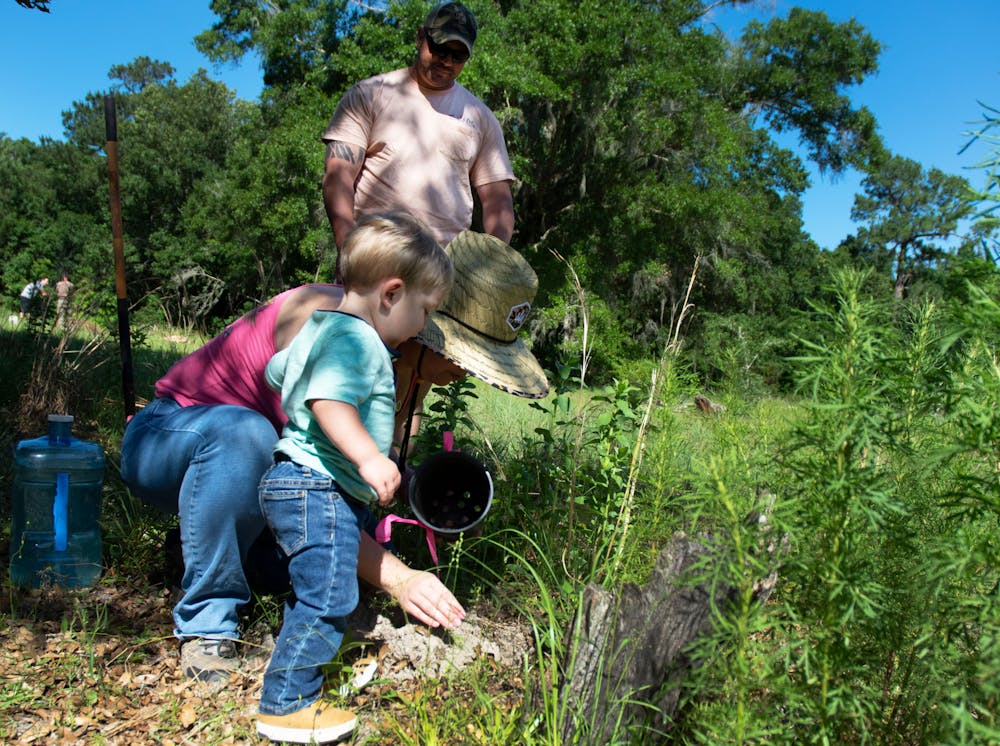Savannah Gass’s first word was ‘bug,’ so it was no surprise when she grew up and developed an undying love of nature.
As a young girl in Florida, she would take trips out west with her sister and dad at the beginning of every summer.
Kelsea Gass, Savannah’s sister, said when she was 11 and Savannah was 14, their dad accidentally took them on an advanced hiking trail to see what was then called Harney Peak in the Black Hills National Forest of South Dakota.
Savannah and Kelsea’s father, Dan Gass, said after eating all of their food and helping each other through rough and dangerous terrain for a few hours, they made it to the base of a lookout where they saw people they hadn’t seen on the way up.
As it turned out, there was an easier way.
“You could have just drove a truck up there,” Dan, a 62-year-old ambulance salesman, said.
But the Gass girls took it in stride.
“We were too young to complain,” Kelsea said. “We were just having fun.”
Since Savannah’s unexpected death in September, she has become a part of nature by decomposing naturally in the Prairie Creek Conservation Cemetery.
The Gasses convened at the cemetery on May 15 for Community Planting Day in the wide-open meadow area where patches of native wildflowers brighten the land and the sun beats down on dead natural wreaths.
Sarah Uhrig, the assistant director at PCCC, said it was one of four conservation burial grounds in the United States when it started in 2010.
Uhrig said PCCC does not embalm its residents or use traditional coffins or vaults, which are concrete boxes that keep the bottom of the grave flat. Savannah rests on cotton in a natural wicker casket.
A conservational cemetery operates with a goal of minimal environmental impact, Uhrig said.
“It's about these people, but it's also about the land and protecting it and managing it as a living space,” she said.
First, members of the Society of the Pick and Spade, a community of volunteers who help the cemetery operate, dig the graves by hand, Uhrig said.
Next, the contents of the graves are considered. There are about 700 people buried at PCCC, and each of them rests in minimalist graves with their names, birth dates and death dates etched into the head of a large stake instead of a traditional tombstone.
The goal is to leave as little of a barrier as possible between the body and the earth. Many are buried in shrouds and layers of natural wicker woven into biodegradable caskets, Uhrig said.
Community Planting Day in the meadow is one of two days each year when families and volunteers combine with staff at PCCC to reintroduce native shrubs, grasses and wildflowers to the land, Uhrig said.
The other Community Planting Day is in the green, thickly wooded area of the cemetery, where more plants are also introduced.
This year, Uhrig said PCCC ordered about 120 native plants including shrubs, grasses and wildflowers from growers around Florida. It also conducted a controlled burn of about a quarter-acre area of the meadow three weeks ago to prepare for planting milkweed for butterflies.
Families can call in advance and reserve plants to put at the graves of their loved ones on Community Planting Day, and they can also request for PCCC staff to plant in their stead if they cannot attend, Uhrig said.
Once planted, the location of the plants is recorded by staff so they can water them as needed for the next few months to give the plants the best chance of continuing to live on their own.
The Gasses planted some milkweed on Savannah’s grave to attract butterflies. There were also feathers and a sea shell left on her grave in honor of her love of nature, her father said.
“She was a quiet peacemaker — just had a very kind presence about her with everybody,” Dan said. “Too many people didn’t know her.”
Contact Sam Schaffer at sschaffer@alligator.org. Find him on Twitter @samschaf_.






